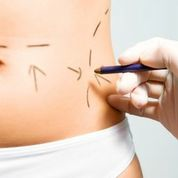 Unless you’ve been living under a rock for the last 20 years, you’ve heard of liposuction. Also known as lipoplasty, liposculpture, suction-assisted lipectomy and a host of other names, liposuction is the most well-known form of body shaping around. It is a surgical procedure, and a rather simple and straightforward approach to fat removal. An incision is made in the patient, and a cannula, which is similar to a needle but larger in circumference, is inserted into the incision. Vacuum pressure is applied to the cannula and fat cells are literally sucked out of the patient’s treatment area.
Unless you’ve been living under a rock for the last 20 years, you’ve heard of liposuction. Also known as lipoplasty, liposculpture, suction-assisted lipectomy and a host of other names, liposuction is the most well-known form of body shaping around. It is a surgical procedure, and a rather simple and straightforward approach to fat removal. An incision is made in the patient, and a cannula, which is similar to a needle but larger in circumference, is inserted into the incision. Vacuum pressure is applied to the cannula and fat cells are literally sucked out of the patient’s treatment area.
While the procedure has been around in various forms since the early 1980’s, there have been steady improvements in the technology, along with various alternative approaches to the procedure. The addition of ultrasonic energy to melt or liquefy the fat before suction removal is a newer take on traditional liposuction. There is also laser-assisted liposuction, in which a tiny laser melts the fat near the tip of the cannula before it is removed, and even a water-based system which emits a very small spray of water to help loosen the fat for removal.
The most recent evolution related to liposuction involves autologous fat transfer. Autologous simply means that the tissue used in a patient comes from that same patient. Currently, fat transfer procedures are among the most popular surgical body shaping options. In this type of procedure, once fat is removed from a patient, it can be moved to another part of that same patient’s body. Before this type of approach was used, the fat cells removed during a liposuction procedure were simply cast away as waste. Today, common scenarios include removing fat from the belly or thigh area, and then implanting that fat in the buttocks or breast area, though many other combinations exist and there are still new applications being developed.
When properly executed by a skilled physician on the right patient candidate, there is not a non-invasive, energy-based body shaping treatment that can compare with the results of liposuction. When combined with autologous fat transfer, some of the most dramatic results are possible. However, it is important to realize that these procedures are indeed surgical and thus inherently carry more risk of complications.
